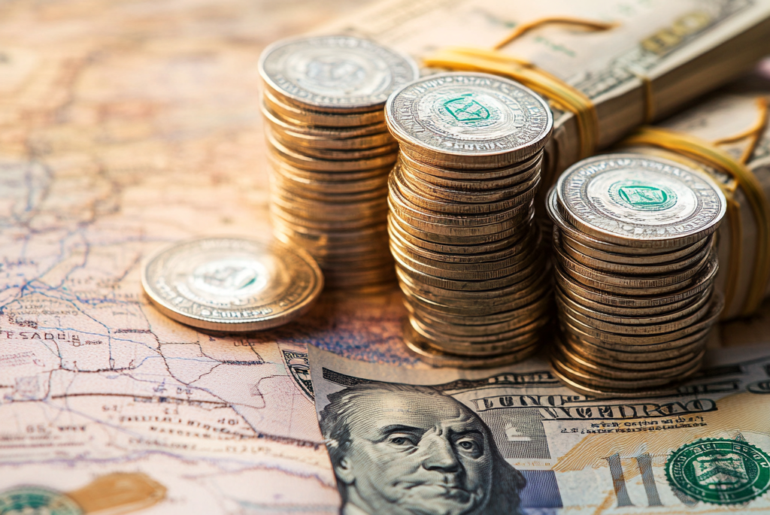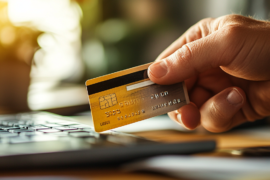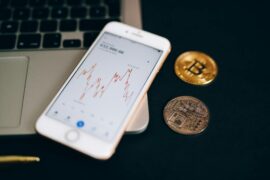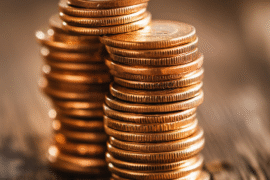This article may contain references to products or services from one or more of our advertisers or partners. We may receive compensation when you click on links to those products or services. Nonetheless, our opinions are our own.
The information presented in this article is accurate to the best of our knowledge at the time of publication. However, information is subject to change, and no guarantees are made about the continued accuracy or completeness of this content after its publication date.
Planning your March Break vacation to the United States is likely causing you to feel both excited and a little nervous, particularly with regard to budgeting. The exchange rate is a significant factor that often surprises travelers. With fluctuating values and varying fees, the amount of money you receive can sometimes feel frustratingly unpredictable.
We’ll explore practical strategies to save on exchange rates and ensure you get the most out of your hard-earned money while enjoying everything your destination has to offer. From timing your currency exchanges to identifying the best payment methods, you’ll find valuable tips to navigate the financial landscape of international travel confidently.
So, let’s get started and learn how to maximize your March Break budget!
- Understanding Exchange Rates and Their Impact on Your Travel Budget
- Timing Your Currency Exchange for Maximum Savings
- Choosing the Right Payment Methods While Abroad
- Avoiding Hidden Fees and Charges When Traveling to the U.S.
- Frequently Asked Questions
- What are the best ways to exchange currency for my U.S. trip during March Break?
- Should I exchange currency before my trip or arrival in the U.S.?
- How can I minimize fees associated with currency exchange?
- Are there specific credit cards that offer better rates for international travel?
- What are some apps or tools to help me track exchange rates?
- Recommended Reads
Understanding Exchange Rates and Their Impact on Your Travel Budget
When planning your trip to the U.S. for March Break, understanding exchange rates can significantly affect your travel budget. The exchange rate determines how much of your home currency you must spend to get the equivalent U.S. dollars. A fluctuating exchange rate can stretch your budget or make it tighter than expected. To make the most of your money, consider the following strategies:
- Monitor Exchange Rates: Stay informed about current exchange rates by using financial news apps or websites. This will help you gauge when to exchange your money.
- Exchange in Advance: If you notice a favorable rate, consider exchanging a portion of your currency ahead of time to secure a better deal.
- Avoid Airport Exchanges: Currency exchange services at airports often charge higher fees and offer less favorable rates.
Additionally, be aware of transaction fees associated with withdrawals or purchases made with your credit or debit card in the U.S. Some cards offer no foreign transaction fees, which can lead to significant savings. Here’s a comparison of exchange methods:
| Method | Exchange Rate | Transaction Fees |
|---|---|---|
| Airport Exchange | Poor | High |
| ATM Withdrawal | Fair | Variable |
| Prepaid Travel Card | Good | Low |
By following these tips and being mindful of managing currency exchange, you can maximize your travel experience without overspending. A little preparation goes a long way in keeping your budget intact while enjoying your getaway!
Timing Your Currency Exchange for Maximum Savings
Timing your currency exchange can significantly impact how much you save. Currency values fluctuate daily based on economic indicators and geopolitical events. Monitor the trends of exchange rates in the lead-up to your travel date. You might want to consider the following strategies:
- Track Historical Trends: Research past exchange rates for the months before your trip. This can give you an idea of the best times to exchange.
- Set Rate Alerts: Use currency converter apps or websites to set alerts for your desired exchange rate. This way, you’ll be notified instantly when the rate drops in your favor.
- Exchange Small Amounts Early: If you believe rates may decline, consider exchanging a small amount of currency before your trip to lock in a better rate.
To illustrate how rates fluctuate, here’s a simple table showing hypothetical exchange rates over a few weeks:
| Date | Exchange Rate (1 USD to Local Currency) |
|---|---|
| Feb 1 | 1.25 |
| Feb 15 | 1.22 |
| Feb 28 | 1.30 |
| Mar 5 | 1.23 |
As you can see, rates can vary significantly. Monitoring these trends will help you exchange money at the most favorable time.
Voted "Best Overall Budgeting App" by Forbes and WSJ
Monarch Money helps you budget, track spending, set goals, and plan your financial future—all in one app.
Get 50% OFF your first year with code MONARCHVIP
Choosing the Right Payment Methods While Abroad
The right payment methods can significantly affect how much you spend abroad. To minimize costs and avoid high exchange rates, consider these options:
- Credit Cards: Use a credit card that does not charge foreign transaction fees. These cards typically offer competitive exchange rates and may provide rewards points.
- Debit Cards: Withdraw cash using a debit card that offers free foreign ATM withdrawals. Be mindful of local ATM fees and potential conversion charges.
- Local Currency: When prompted during transactions, always pay in the local currency instead of your home currency to avoid unfavorable conversion rates.
- Cash: Carry a small amount for places that may not accept cards. Exchange some currency before your trip to avoid high airport exchange rates.
You might also consider a prepaid travel card to budget your spending and avoid extra fees. Here’s a comparison of available options:
| Payment Method | Pros | Cons |
|---|---|---|
| Credit Card | No foreign transaction fees, rewards | Interest is not paid on time |
| Debit Card | Easy access to cash, lower fees | Possible ATM fees |
| Prepaid Card | Fixed budget, less risk of overspending | Limited acceptance |
| Cash | Widely accepted | Risk of loss or theft |
Navigating hidden fees is essential to keeping your budget in check. Here are a few tips to help you stay informed:
- Compare Currency Exchange Options: Research local banks, currency exchange kiosks, and online services to find the best rates. Exchanging money at your home bank can often be cheaper than using airport kiosks.
- Use Credit Cards Wisely: Choose a credit card that does not charge foreign transaction fees to save money on purchases.
- Notify Your Bank: Let your bank know you’ll travel to avoid account blocks due to suspicious transactions.
- Watch Out for ATM Fees: Use ATMs affiliated with your bank to minimize fees.
Here’s a breakdown of potential fees:
| Type of Fee | Potential Cost |
|---|---|
| Currency Exchange at Airport | $10 – $20 |
| Foreign Transaction Fee (per purchase) | 2% – 3% |
| ATM Withdrawal Fee | $2 – $5 |
You can enjoy your trip by staying proactive without watching your funds disappear due to hidden charges.
Frequently Asked Questions
What are the best ways to exchange currency for my U.S. trip during March Break?
Consider using a credit card with no foreign transaction fees. This can save you on fees while offering a competitive exchange rate. Additionally, withdrawing cash from ATMs in the U.S. often provides better rates than currency exchange services.
Should I exchange currency before my trip or arrival in the U.S.?
It’s a good idea to exchange a small amount before your trip for immediate expenses. Waiting until you arrive for larger exchanges may provide better rates at local banks or ATMs.
How can I minimize fees associated with currency exchange?
Look for banks or ATMs that do not charge international withdrawal fees. Using your own bank’s ATMs can also reduce transaction costs. Always pay in the local currency when making purchases to avoid hidden conversion fees.
Are there specific credit cards that offer better rates for international travel?
Yes, travel credit cards with zero foreign transaction fees are ideal. Cards affiliated with major airlines or travel rewards programs often provide additional perks for travelers.
What are some apps or tools to help me track exchange rates?
Use currency converter apps like XE Currency or OANDA to monitor real-time exchange rates. Many banking apps also include currency calculators, helping you time your exchanges effectively.
By staying informed and planning ahead, you can maximize your travel budget while avoiding unnecessary fees. Enjoy your March Break getaway!

Reviewed and edited by Albert Fang.
See a typo or want to suggest an edit/revision to the content? Use the contact us form to provide feedback.
At FangWallet, we value editorial integrity and open collaboration in curating quality content for readers to enjoy. Much appreciated for the assist.
Did you like our article and find it insightful? We encourage sharing the article link with family and friends to benefit as well - better yet, sharing on social media. Thank you for the support! 🍉
Article Title: Saving on Exchange Rates for Your U.S. March Break Trip
https://fangwallet.com/2025/03/16/saving-on-exchange-rates-for-your-u-s-march-break-trip/The FangWallet Promise
FangWallet is an editorially independent resource - founded on breaking down challenging financial concepts for anyone to understand since 2014. While we adhere to editorial integrity, note that this post may contain references to products from our partners.
The FangWallet promise is always to have your best interest in mind and be transparent and honest about the financial picture.
Become an Insider

Subscribe to get a free daily budget planner printable to help get your money on track!
Make passive money the right way. No spam.
Editorial Disclaimer: The editorial content on this page is not provided by any of the companies mentioned. The opinions expressed here are the author's alone.
The content of this website is for informational purposes only and does not represent investment advice, or an offer or solicitation to buy or sell any security, investment, or product. Investors are encouraged to do their own due diligence, and, if necessary, consult professional advising before making any investment decisions. Investing involves a high degree of risk, and financial losses may occur including the potential loss of principal.
Source Citation References:
+ Inspo
There are no additional citations or references to note for this article at this time.












































